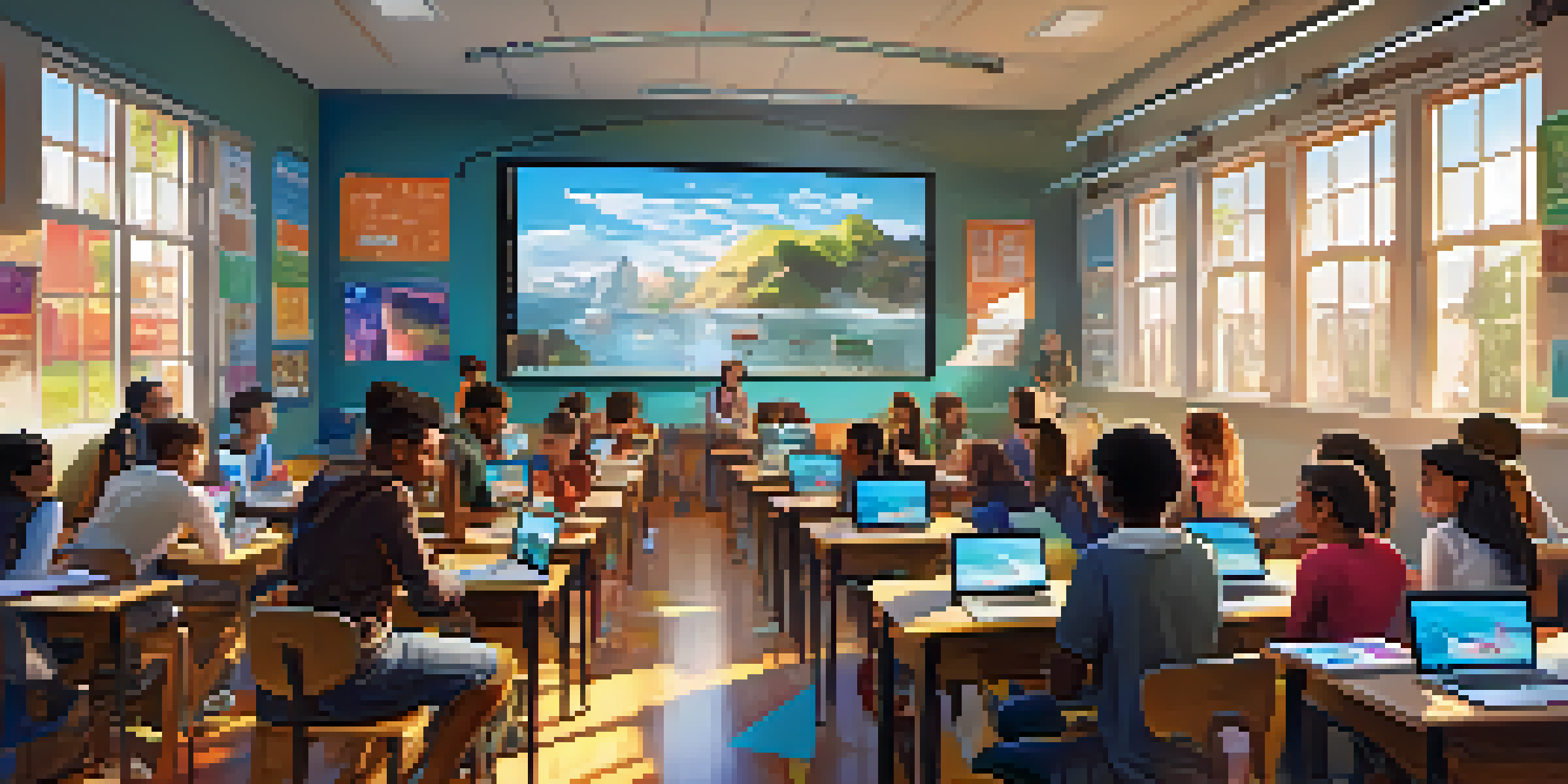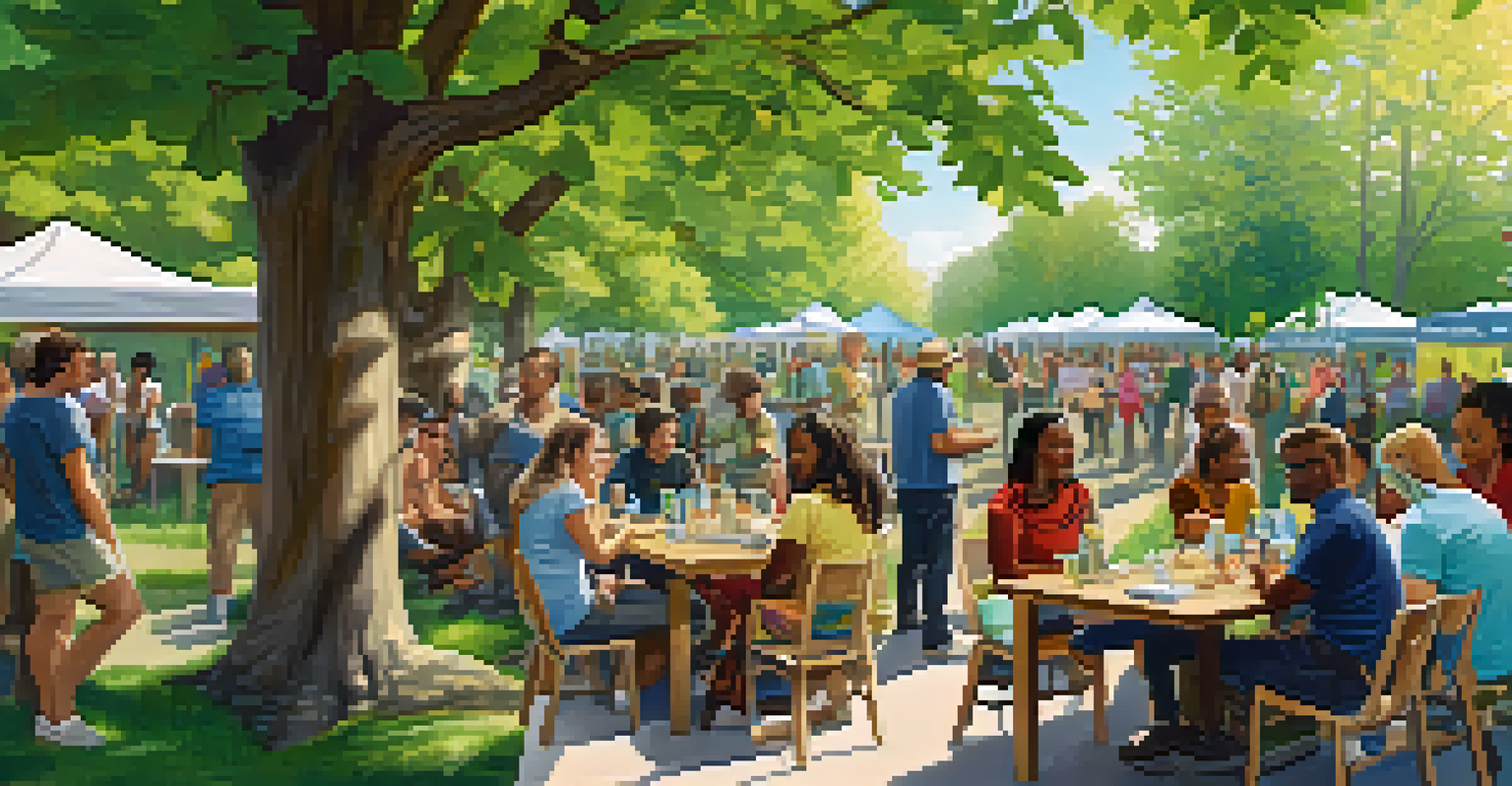Transmedia Learning: The Importance of Community Engagement

Understanding Transmedia Learning and Its Benefits
Transmedia learning refers to the integration of multiple media platforms to convey knowledge. Imagine a story that unfolds across a book, a video game, and a movie, each contributing to a richer narrative. This approach not only captures attention but also caters to different learning styles, making knowledge more accessible and engaging.
Learning is not a spectator sport. Students do not learn much just by sitting in classes listening to teachers, memorizing prepackaged assignments, and spitting out answers. They must talk about what they are learning, write about it, relate it to past experiences, and apply it to their daily lives.
By using various media, educators can address diverse learners' needs, from visual learners who thrive on videos to auditory learners who benefit from podcasts. This flexibility creates a more inclusive environment where everyone can participate and learn in ways that resonate with them. Ultimately, it encourages deeper understanding and retention of information.
Furthermore, transmedia learning promotes critical thinking and creativity. When learners interact with content across different platforms, they are challenged to make connections, ask questions, and engage with the material actively. This dynamic learning experience can lead to a more profound grasp of concepts and skills.
The Role of Community in Transmedia Learning
Community plays a pivotal role in transmedia learning, as it provides a support system for learners. When individuals come together to share knowledge and experiences, they foster a collaborative environment that enhances the learning process. Think of it as a potluck dinner, where everyone brings a dish, creating a richer meal than any single person could provide.

Engaging with the community allows learners to view topics from multiple perspectives, enriching their understanding. This collaborative approach not only deepens knowledge but also promotes a sense of belonging and validation. As learners share insights and resources, they contribute to a collective pool of wisdom that benefits everyone involved.
Transmedia Learning Enhances Engagement
By integrating multiple media platforms, transmedia learning caters to diverse learning styles, making knowledge more accessible and engaging.
Moreover, community engagement in transmedia learning can inspire motivation. When learners see their peers involved and enthusiastic, it creates a ripple effect, encouraging more active participation. This sense of shared purpose can ultimately lead to better learning outcomes and a lasting impact on individuals and the community as a whole.
Creating Engaging Content Across Platforms
To harness the power of transmedia learning, educators must create compelling content that resonates with their audience. This involves understanding the preferences and interests of the community. For instance, if a community is passionate about environmental issues, content can be tailored to include documentaries, interactive apps, and social media campaigns focused on sustainability.
The future belongs to those who believe in the beauty of their dreams.
Engaging content should also encourage interaction, allowing learners to contribute their ideas and insights. This can be achieved through discussion forums, collaborative projects, or social media groups. The more learners feel they have a voice, the more invested they become in the learning process.
Additionally, consistency across platforms is essential. While each medium may have its unique style, the core message should remain coherent. This creates a seamless experience for learners, making it easier for them to navigate and connect the dots between different content types.
The Impact of Technology on Community Engagement
Technology has transformed how communities engage with transmedia learning initiatives. With the rise of social media, webinars, and online forums, learners can connect and collaborate like never before. This instantaneous access to information and each other has made it easier to share knowledge and resources.
For instance, virtual reality (VR) experiences can bring communities together in immersive learning environments. Imagine a group of students exploring ancient civilizations through a VR simulation, discussing their observations in real-time. Such experiences not only enhance understanding but also strengthen community bonds.
Community Fuels Collaborative Learning
Engaging with a community fosters collaboration and motivation, enriching the learning experience through shared knowledge and perspectives.
However, it's essential to ensure that technology complements rather than replaces human interaction. While digital platforms can facilitate engagement, it's the meaningful connections formed within communities that truly enrich the learning experience.
Fostering Inclusivity Through Community Engagement
Inclusivity is a core principle of transmedia learning, and community engagement helps achieve this goal. By actively involving diverse groups, educators can ensure that various voices and perspectives are represented. This approach enriches the learning experience and fosters empathy and understanding among participants.
For example, involving community members from different backgrounds can lead to discussions that challenge assumptions and broaden horizons. When learners encounter different viewpoints, they are encouraged to think critically and reflect on their biases, ultimately leading to personal growth.
Creating an inclusive environment also requires ongoing dialogue and feedback. Educators should regularly check in with community members to understand their needs and preferences. By fostering an atmosphere of open communication, communities can evolve together and support each other in the learning journey.
Measuring the Success of Transmedia Learning Initiatives
Measuring the effectiveness of transmedia learning and community engagement can be challenging but essential. Educators should establish clear objectives and metrics to gauge progress. For example, tracking participant engagement, knowledge retention, and overall satisfaction can provide valuable insights into what works and what needs improvement.
Surveys and feedback sessions can also be instrumental in assessing the impact of transmedia initiatives. By gathering input from learners and community members, educators can gain a better understanding of the strengths and weaknesses of their approach. This feedback loop allows for continuous improvement and adaptation.
Technology Enhances Community Connections
Advancements in technology facilitate community engagement in transmedia learning, creating immersive experiences while emphasizing the importance of meaningful human interaction.
Additionally, success should also be measured in terms of community growth and collaboration. An increase in participation, shared projects, or partnerships can indicate a thriving learning environment. Ultimately, the goal is to create a sustainable community that supports ongoing learning and engagement.
The Future of Transmedia Learning and Community Engagement
As we look to the future, the potential for transmedia learning and community engagement is immense. With advancements in technology, such as artificial intelligence and augmented reality, educators can create even more immersive and interactive experiences. These innovations can further enhance the learning process and deepen community connections.
Moreover, the growing emphasis on lifelong learning highlights the importance of community engagement. As individuals seek to acquire new skills and knowledge throughout their lives, communities can play a crucial role in providing support and resources. This collective approach fosters a culture of continuous growth and development.

Ultimately, the future of transmedia learning lies in collaboration and shared experiences. By embracing the power of community, we can create richer learning environments that empower individuals and inspire them to contribute to a brighter, more informed world.